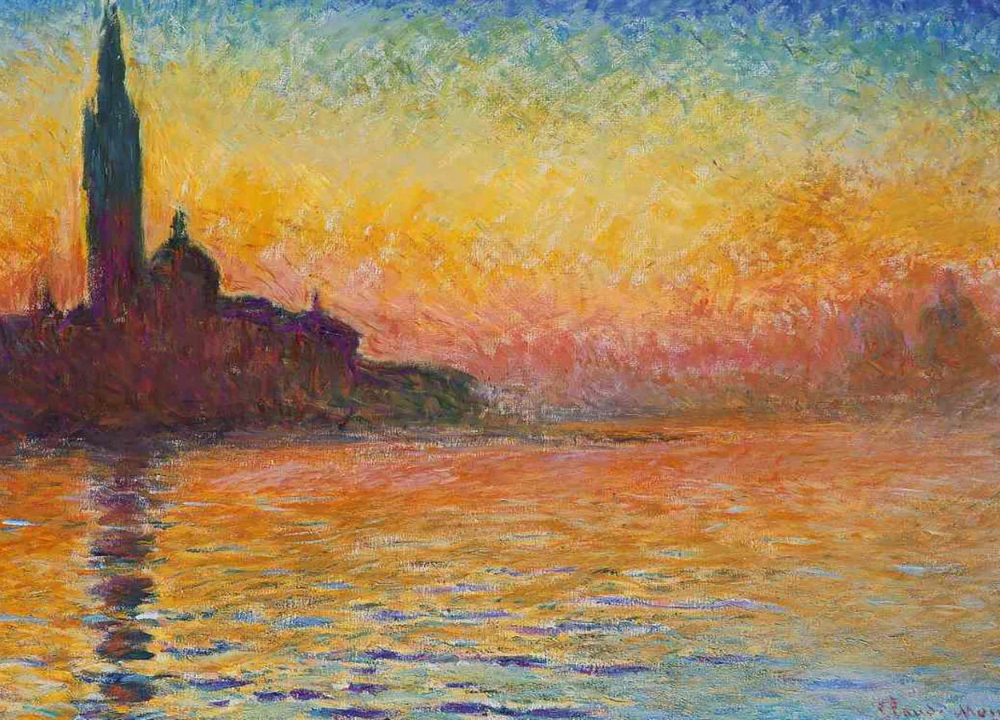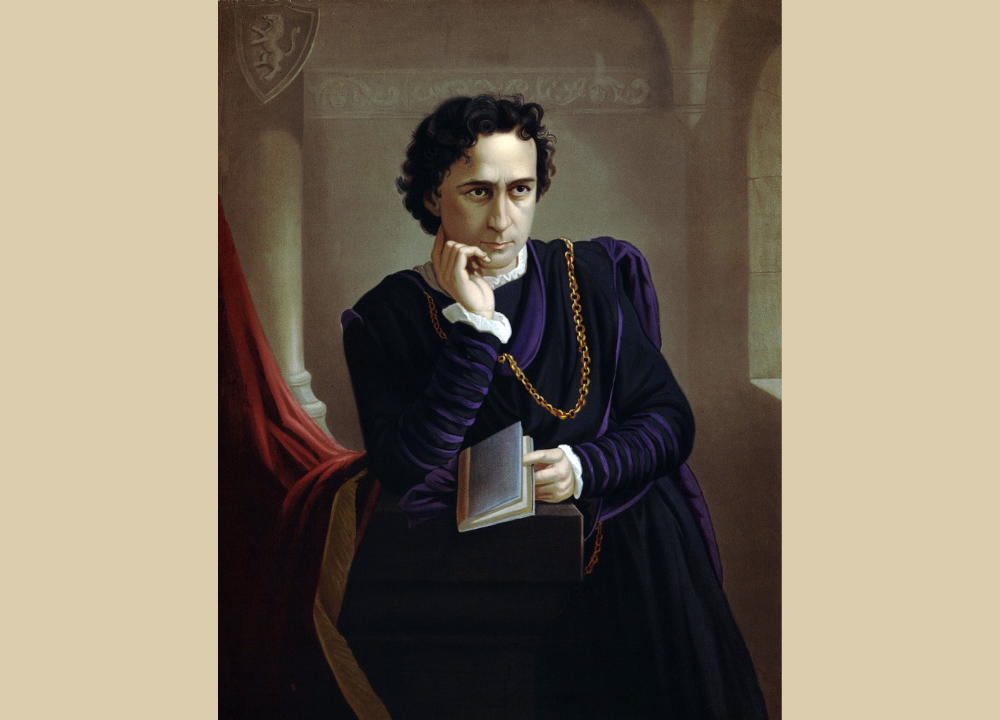Claude Monet drew inspiration from nature, specifically his own garden, in creating his most iconic paintings. Claude Monet, a renowned French painter, is celebrated for his pioneering role in the Impressionist movement.
Table of Contents
His innovative approach to capturing light, color, and nature in his artwork has continued to fascinate and inspire art enthusiasts around the world. Monet’s most iconic paintings are a result of his deep connection with nature, particularly his garden in Giverny.
With its serene water lilies, vibrant flowers, and picturesque landscapes, the garden served as an endless source of inspiration for Monet. Through his brushstrokes and keen observations, Monet was able to immortalize the beauty of his surroundings, creating timeless masterpieces that continue to captivate audiences to this day. We will delve into the inspirations behind some of Monet’s most iconic paintings and explore how they came to fruition through his unique artistic vision.
Early Life And Influences
Claude Monet, the renowned French impressionist painter, was deeply influenced by his early life experiences, mentors, and artistic training. These formative years laid the foundation for his artistic vision and inspired many of his most iconic paintings. Let’s delve into the key influences that shaped Monet’s journey as an artist.
Childhood In Le Havre
Born on November 14, 1840, in Paris, Monet spent his early years in the picturesque coastal town of Le Havre in Normandy, France. Growing up amidst the scenic beauty of the harbors, the vast open skies, and the ever-changing sea, the young artist was captivated by the interplay of light, color, and nature. These striking coastal landscapes became a recurring theme in his later works.
Mentors And Artistic Training
Monet’s artistic talent was recognized and nurtured by his mentors and artistic training. At an early age, Monet met Eugene Boudin, a plein air painter, who introduced him to the practice of painting outdoors. This innovative approach allowed Monet to capture the fleeting effects of light and atmosphere directly on canvas, a hallmark of his later works.
In 1859, Monet enrolled at the Le Havre Secondary School of the Arts, where he received formal training and gained a solid foundation in drawing and perspective. Here, under the guidance of his teacher, Jacques-Francois Ochard, Monet learned about the importance of observation and the need to paint from life. These fundamental principles would shape his artistic style throughout his career.

Later, Monet moved to Paris, where he studied under Charles Gleyre, a Swiss painter. In Gleyre’s atelier, he met fellow artists like Auguste Renoir, Frederic Bazille, and Alfred Sisley. Together, they formed the core of the emerging Impressionist movement, challenging the traditional academic approach to art.
Monet’s exposure to the works of the Barbizon School artists and the Japanese woodblock prints that flooded Europe during the mid-19th century also left a profound impact on his artistic development. He drew inspiration from the Barbizon painters’ emphasis on capturing the natural world in a realistic and truthful manner, as well as the Japanese art’s unconventional compositions and harmonious use of color.
As Monet’s style evolved, he sought to capture the transitory nature of light and atmosphere, focusing on the effects of color and how they changed under different conditions. This fascination with capturing the essence of a moment, rather than striving for rigid accuracy, embodied the essence of Impressionism.
Monet’s early life and the influences he encountered along the way shaped his unique artistic voice. From his picturesque childhood in Le Havre to the guidance of his mentors and exposure to diverse artistic styles, each aspect played a role in shaping the revolutionary artist we know today.
Impressionism And The Birth Of A New Style
Experience the birth of a new artistic style through the works of Claude Monet. Discover the inspirations behind his most iconic paintings, showcasing the essence of Impressionism in its purest form.
Claude Monet, one of the most renowned painters in art history, played a pivotal role in the emergence of the Impressionist movement. This movement revolutionized the art world during the late 19th century, breaking away from traditional artistic conventions and paving the way for a new style characterized by capturing fleeting moments of light and color. Monet’s contribution to Impressionism was significant, with his iconic paintings serving as a source of inspiration for fellow artists and leaving an indelible mark on the art world.
Formation Of The Impressionist Movement
The Impressionist movement came into being as a response to the rigid standards set by the French Academy of Fine Arts, which favored traditional techniques and subject matters. A group of avant-garde artists, including Monet, sought to challenge these norms and explore innovative ways to depict the world around them. They rebelled against the established art institutions and sought to capture the essence of a moment in time, rather than focusing on meticulous details.
This rejection of traditional art principles led to the formation of the Impressionist movement, which was named after Monet’s painting “Impression, Sunrise,” exhibited in 1874. The Impressionists aimed to create a sense of immediacy and spontaneity in their artworks, often painting en plein air (outdoors) to capture natural light and its dynamic effects on colors.
Monet’s Contribution To Impressionism
Monet’s role in the development of Impressionism cannot be overstated. His distinctive style and keen eye for capturing the interplay of light and atmosphere revolutionized the way artists approached their subjects. Monet’s brushstrokes were loose and visible, contrasting with the smooth and precise strokes of traditional art. He sought to convey the ever-changing nature of light in his paintings, opting for vibrant colors and capturing the essence of a scene rather than its details.
Monet’s iconic series such as “Water Lilies” and “Haystacks” exemplify his dedication to exploring the effects of light and color. These series showcased his fascination with capturing the same subject under different lighting conditions, conveying the transient nature of perception and the ever-changing beauty of the natural world. Monet’s passion for painting en plein air and his innovative use of color and brushstrokes influenced generations of artists, making a profound impact on the art world as a whole.
Giverny: A Haven Of Inspiration
Claude Monet’s artistic journey led him to the picturesque village of Giverny, tucked away in the serene countryside of Normandy, France. This idyllic setting became his haven of inspiration, influencing some of his most iconic paintings. Let’s explore the various elements of Giverny that captivated Monet’s artistic soul.
Settling In Giverny
After spending time in various locations, Monet eventually settled in Giverny in 1883. The peaceful village provided the perfect backdrop for his artistic pursuits. Surrounded by rolling hills, meandering rivers, and charming architecture, Giverny offered the French painter tranquility and creative solace.
The Enchanting Gardens
At the heart of Monet’s Giverny sanctuary lay his beloved gardens. With meticulous care and dedication, he transformed the landscape into a riot of colors. The gardens at Giverny were a spectacle of nature, bursting with an abundance of flowers that cascaded in their vibrant hues. Monet drew inspiration from the ever-changing seasons, capturing their transient beauty in his paintings.
Water Lilies And The Japanese Bridge
One of Monet’s most renowned motifs originated in the enchanting water lily pond he created within his Giverny gardens. The stillness of the water, the floating lily pads, and the delicate blossoms were a constant source of fascination for the artist. Monet even constructed a Japanese bridge to further enhance the beauty of this magical setting.
Capturing The Effects Of Light And Atmosphere
Claude Monet, the renowned French impressionist painter, was captivated by the interplay of light and atmosphere in his works. Through his ingenious brushstrokes and color choices, Monet skillfully captured the ever-changing qualities of light in different environments, transforming his paintings into vibrant visual experiences.
Monet’s Fascination With Changing Light
Monet’s fascination with the transient nature of light stemmed from his deep appreciation of nature’s beauty. He observed how light altered the appearance of landscapes, objects, and even people throughout the day. This led him to tirelessly explore and depict the various effects that light could produce, resulting in a mesmerizing collection of paintings that delighted viewers with their luminosity.
The Series Paintings
A distinctive characteristic of Monet’s artistic style was his inclination towards creating series of paintings. In these series, he would paint the same subject multiple times, often capturing it under different lighting conditions. By doing so, Monet could highlight the diverse moods and atmospheres that light created, providing a comprehensive portrayal of its influence on the subject.
To exemplify this approach, one of Monet’s most famous series is the Water Lilies, where he depicted his beloved pond and its floating flowers in various lighting situations. This series showcased Monet’s ability to capture the ever-changing rhythms of light and its transformative impact on the scenery.
Haystacks And Rouen Cathedral
Monet’s exploration of light extended beyond natural landscapes. Two other notable series that encapsulate his fascination with capturing light’s effects are the Haystacks and Rouen Cathedral paintings.
In the Haystacks series, Monet painted numerous haystacks in different weather conditions and at various times of the day. By observing how light shifted and altered the appearance of the haystacks, he was able to convey the ephemeral beauty that nature possessed.
Similarly, the Rouen Cathedral series showcases Monet’s mastery in translating the ethereal qualities of light and atmosphere onto the canvas. He painted the cathedral facade multiple times, highlighting the changes in color, mood, and ambiance brought about by varying lighting conditions.
Through these series and his relentless pursuit of portraying the intricate interplay of light and atmosphere, Monet revolutionized the art world by instilling a sense of movement, vitality, and dynamism in his paintings. His masterpieces continue to mesmerize and inspire art enthusiasts and admirers to this day.
Exploration Of Nature And Landscapes
Claude Monet, the renowned French impressionist painter, found immense inspiration in the beauty of nature and landscapes. His deep connection with the natural world is evident in his most iconic paintings, which capture the essence and emotions of the surrounding environment. Let’s delve into three notable themes that showcase Monet’s exploration of nature and landscapes.
Seascapes And The Coast Of Normandy
Monet’s love for the sea and coastal landscapes is vividly portrayed in his breathtaking seascapes. One of his favorite locations was the coast of Normandy in northern France. Here, Monet depicted the ever-changing moods of the sea, from calm and serene to turbulent and powerful. The mesmerizing colors of the ocean and the interplay of light and shadow became the focal points of his paintings, engaging viewers in a visual journey.
The Iconic Water Lily Pond
The water lilies became Monet’s muse, and he dedicated a significant part of his artistic career to capturing their beauty and tranquility. The iconic Water Lily Pond series showcases Monet’s fascination with the ephemeral nature of these aquatic plants. With delicate brushstrokes and a harmonious color palette, Monet depicted the reflections of the lilies on the water’s surface, creating a sense of serenity and introspection. His ethereal compositions allow viewers to immerse themselves in the peaceful ambiance of the natural world.
The Poppy Field And Other Nature Scenes
In addition to seascapes and water lilies, Monet found inspiration in various nature scenes, particularly fields of vibrant poppies. His paintings of poppy fields were characterized by bold and energetic brushwork, capturing the essence of these vibrant flowers in their natural habitat. Monet’s skillful use of light and color evokes a sense of joy and vitality, inviting viewers to experience the enchantment of nature firsthand.
Aside from these specific themes, Monet’s exploration of nature and landscapes extended to various other subjects. Whether it was a blossoming garden, a windmill amidst fields, or a simple rural path, he constantly sought to capture the beauty of the world around him. Through his unique artistic vision and unparalleled talent, Monet’s paintings continue to inspire and captivate audiences to this day.
Legacy And Influence
Claude Monet’s most iconic paintings were inspired by a diverse range of influences, from the vibrant gardens of Giverny to the changing light and atmosphere of the French countryside. His legacy and influence as a master of impressionism continue to inspire artists and art enthusiasts today.
Claude Monet’s innovative and revolutionary approach to art continues to shape and inspire the art world years after his passing. His legacy can be seen in various aspects of the art industry, including his impact on the art world, his continuing influence on contemporary artists, and his enduring popular appeal and recognition.
Impact On The Art World
Monet’s unique use of color, light, and brushstrokes revolutionized the art world and had a profound impact on future generations. His commitment to capturing the essence of natural light and its effects on landscapes influenced Impressionism as an art movement and laid the foundation for modern art techniques. With his groundbreaking works, Monet challenged traditional artistic conventions and inspired artists to explore new horizons.
Continuing Influence Of Monet’s Style
Monet’s style, characterized by loose brushwork and emphasis on capturing fleeting moments, continues to influence artists today. Many contemporary painters draw inspiration from his ability to convey atmosphere and emotion through bold strokes and vibrant colors. By experimenting with Monet’s techniques, artists can create dynamic and expressive interpretations of the world around them.
Popular Appeal And Recognition
Monet’s paintings have a universal appeal that transcends time and borders. His images of water lilies, haystacks, and gardens evoke a sense of tranquility and beauty that resonates with audiences of all ages. The enduring popularity of Monet’s work is evident in the countless reproductions, merchandise, and exhibitions dedicated to his art. His iconic status ensures that his masterpieces remain cherished and admired by art lovers worldwide.
Frequently Asked Questions For The Inspirations Behind Claude Monet’s Most Iconic Paintings
Who Has Monet Influenced?
Monet has influenced numerous artists with his Impressionist style and innovative use of light and color. His work has inspired painters around the world to experiment with new techniques and interpretations of the natural world.
What Was Monet Most Interested In?
Monet was most interested in capturing the beauty of nature through his artwork.
What Was The Inspiration For Impressionism?
Impressionism was inspired by capturing fleeting moments of light and color in nature.
What Is One Of Claude Monet’s Most Famous Painting?
One of Claude Monet’s most famous paintings is “Impression, Sunrise. “
Conclusion
Monet’s most iconic paintings continue to captivate audiences with their breathtaking beauty and masterful use of light and color. From his intimate garden scenes to his vibrant landscapes, Monet drew inspiration from nature, capturing fleeting moments and the ever-changing essence of the world around him.
His innovative painting techniques and unique perspective have influenced generations of artists, leaving a lasting legacy in the art world. Through his art, Monet reminds us of the power of observation and the ability to find inspiration in even the simplest of subjects.




